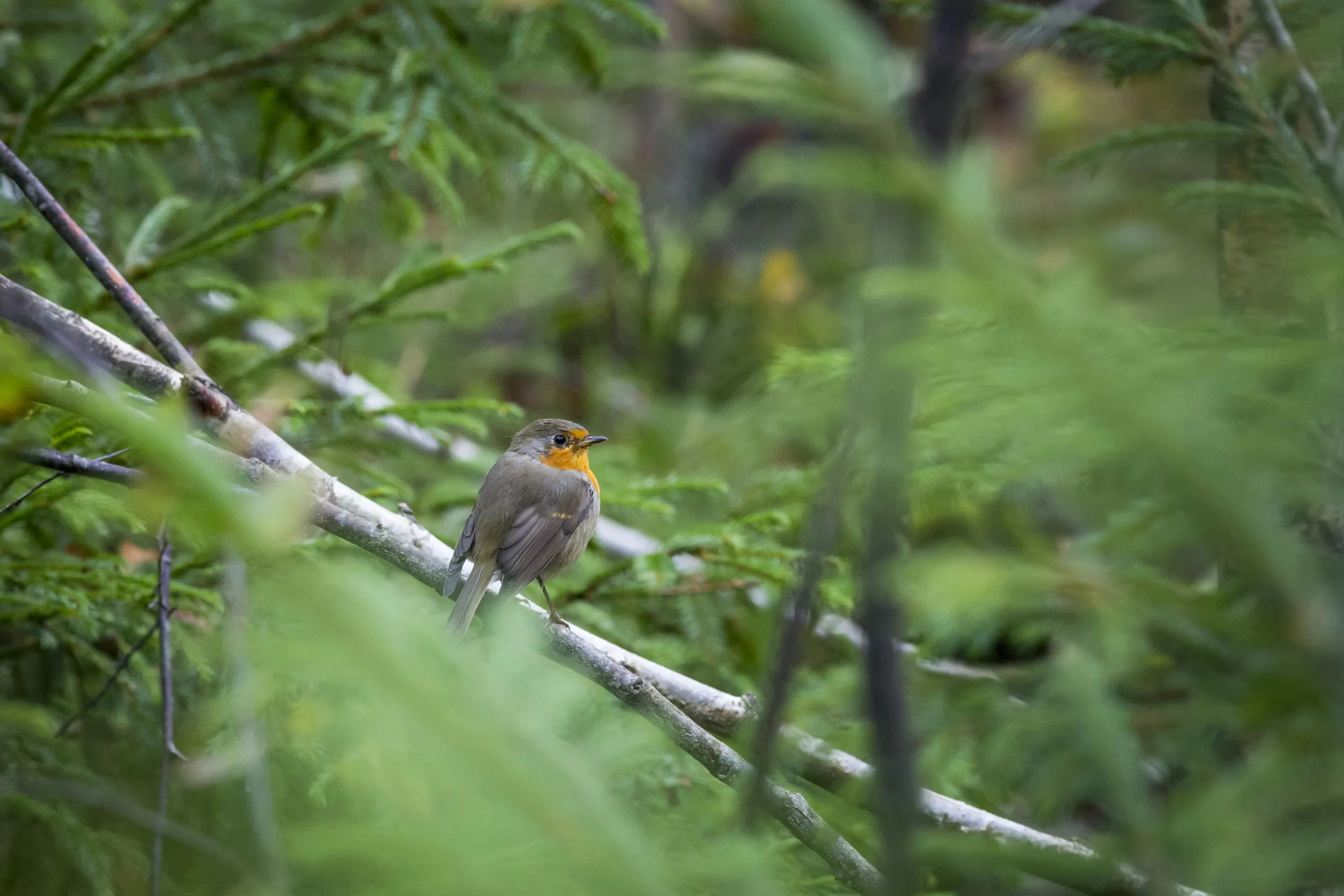Portugal is a fantastic place to go birding, being part of the Iberian Peninsula – a region home to many bird species that can be found no where else in Eurasia. Although many birders will flock to Portugal to chase the many specialty birds that can be found here, there are plenty of small birds of Portugal that they should familiarize themselves with before taking a trip.
Helping birders to learn the small birds in Portugal is exactly why I’ve created this photo guide. Indeed, each of the species that I’ve included below are common birds in Portugal that are easy to overlook due to their tiny sizes. Without further ado, let’s learn about some small birds of Portugal!
Table of Contents
10 Small Birds of Portugal
Coal Tit
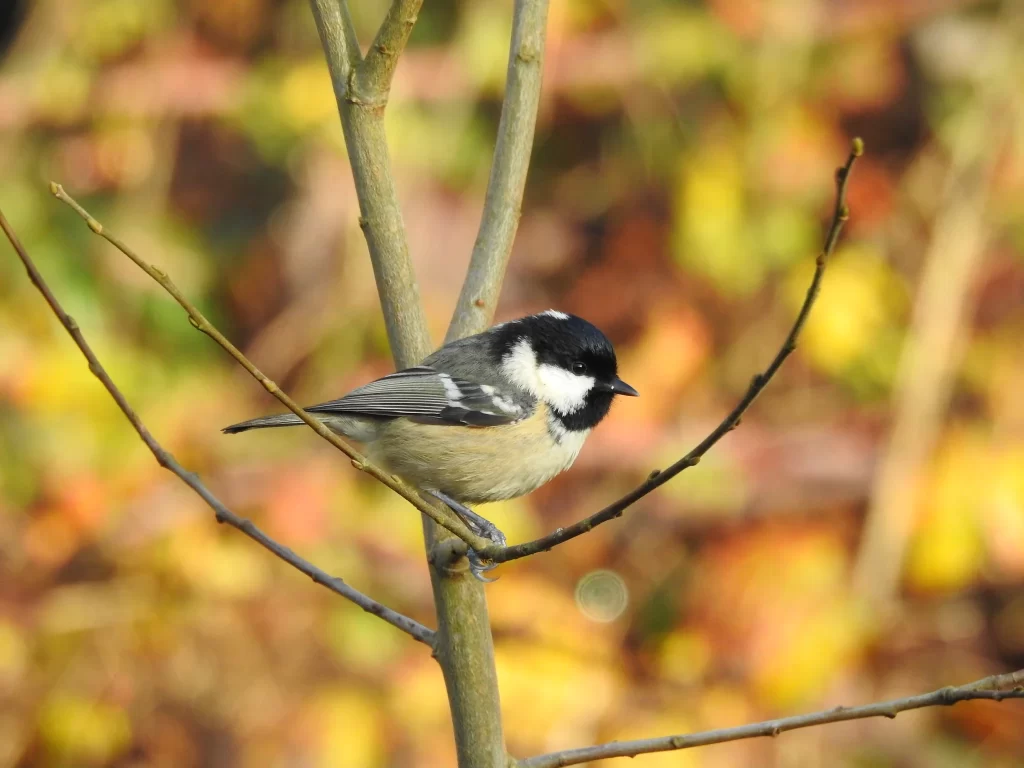
Length: 10 -12 cm (3.95 – 4.75)
Weight: 7.2 – 12 grams (0.25 – 0.42 ounces)
The Coal Tit is a petite songbird that is the smallest of all European tit species. They are sexually monomorphic, with both sexes having white cheeks, white wingbars, black caps, and black throats. Their tails are shorter than those of other tit species.
These small birds of Portugal are familiar to any Portuguese birder, as they are common visitors to backyards where they dine at bird feeders or nest in bird houses. Although these Portugal birds have songs that are rather plain-sounding, birders who keep their ears open will undoubtedly become familiar with their vocalizations, as they’re one of the most familiar sounds in wooded areas of Portugal.
Coal Tits are absent from the southern third of Portugal, but they are abundant in the remainder of the country. These tiny Portugal birds seek out coniferous tracts of woodland, and they are present in Portugal for the entire year. Their range extends from the United Kingdom east to east to Japan.
Common Firecrest
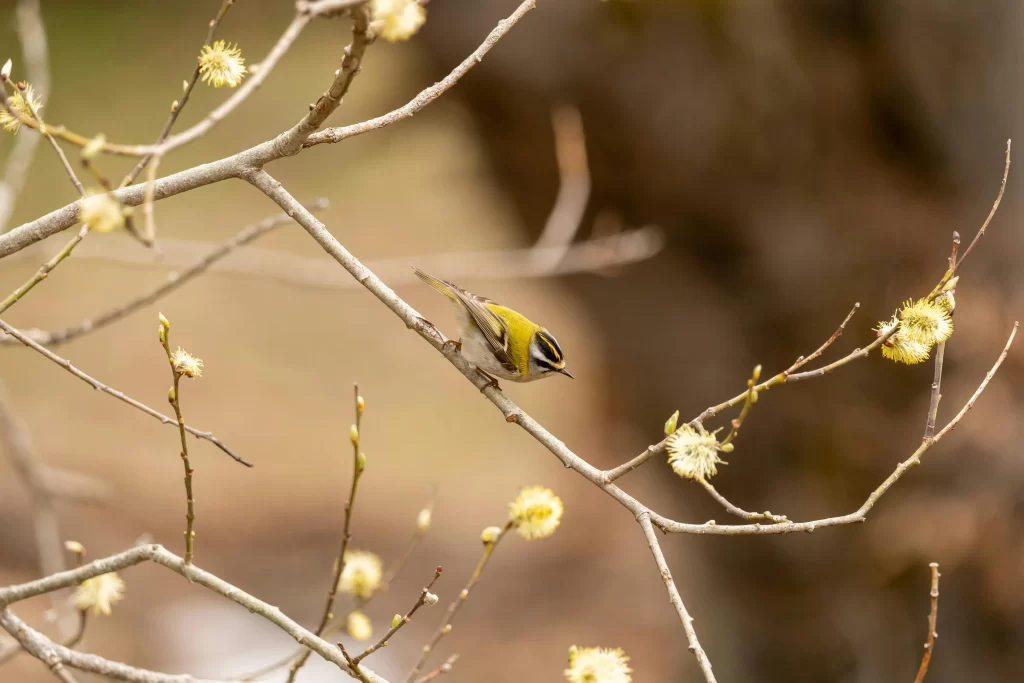
Length: 9 cm (3.55 inches)
Weight: 5 – 7 grams (0.18 – 0.25 ounces)
Common Firecrests are nearly the smallest birds in Portugal, but they’re edged out by the much less common Goldcrest. Although Goldcrests are abundant small birds in the UK, they’re rather scarce in Portugal. Thus, Common Firecrests have earned inclusion on this list because of their diminutive statures and status among the common birds in Portugal.
Common Firecrests are sexually monomorphic. They’ve got attractive green backs and plain, unmarked undersides, while the crown stripe is more orange compared to the stripe of a Goldcrest.
These wild birds in Portugal are absent from parts of southeastern Portugal, but they’re generally considered to be regular and expected in most of the country. They are very active, and birders can easily overlook them as they dart among the upper portions of large coniferous trees.
Common Quail
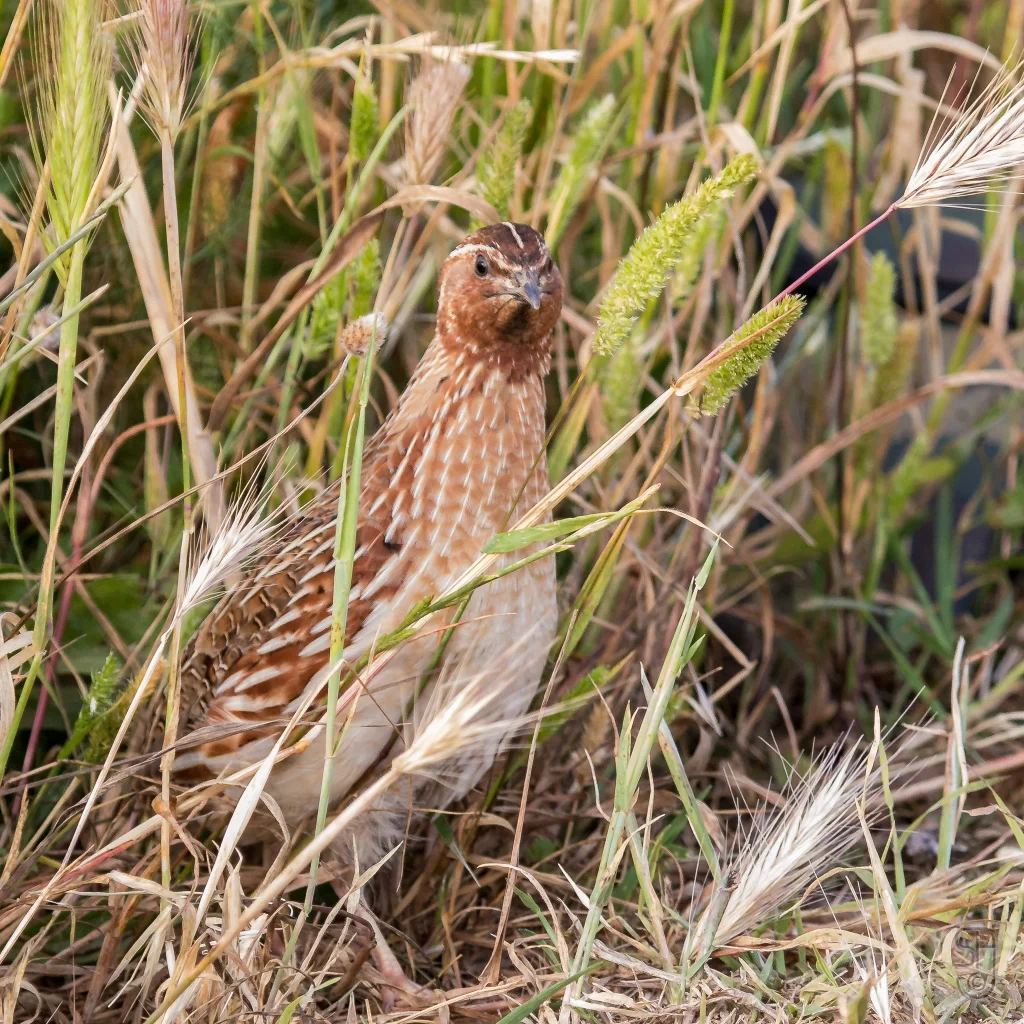
Length: 16 – 20 cm (6.3 – 7.88 inches)
Weight: 70 – 155 grams (2.47 – 5.47 ounces)
Common Quails are the smallest game birds in Portugal. Although they dwarf species such as the aforementioned Common Firecrest, they are still quite small themselves. Males and females have subtle differences in plumage, and females tend to be slightly larger than males.
The lives of Common Quails are perilous, as these small birds of Portugal constantly have to evade predators interested in making a meal of them. Anyone who has seen a Common Quail fly knows that their flight doesn’t appear to be very impressive, but they nonetheless migrate hundreds of kilometers each year in many parts of their range.
Some Common Quails are present year-round in the southern half of Portugal, but birds rarely winter in the northern half of the nation. Look for these Portugal birds in open areas such as agricultural fields or grasslands.
Common Waxbill
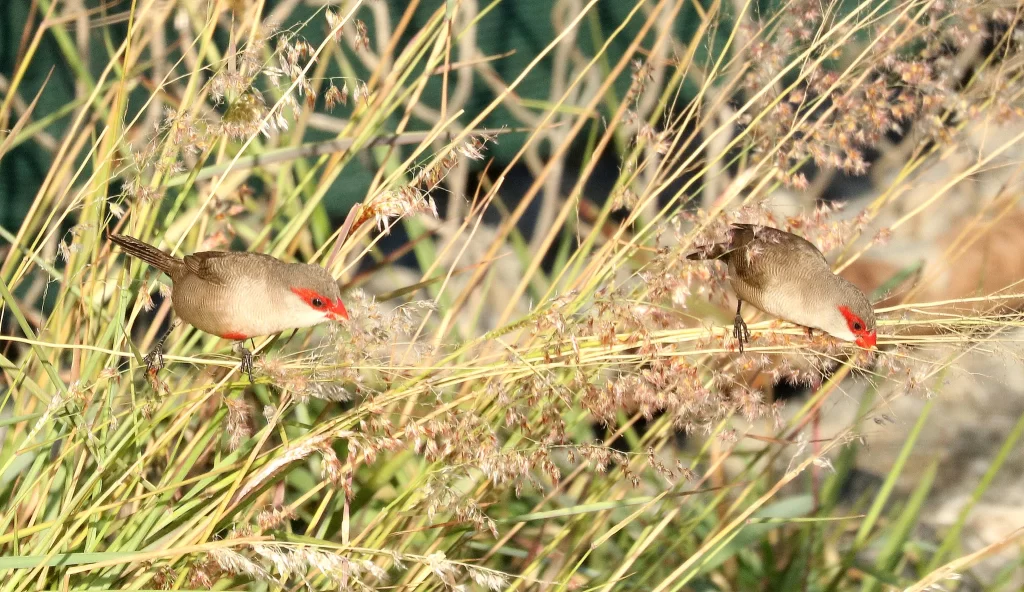
Length: 9.5 – 13 cm (3.75 inches – 5.11 inches)
Weight: 5 – 11 grams (0.18 – 0.39 ounces)
Common Waxbills are not native birds of Portugal, but they have now become one of the most abundant birds in this country, with more than 60,000 eBird reports of this species. In addition to being ubiquitous, they also happen to be quite small.
Both male and female Common Waxbills have red masks that cover much of their faces. Moreover, they’ve got gray bodies with dark streaks and long tails. They’ve got a subtle, twittering song.
These small birds in Portugal are very social, rarely being found alone. They are not shy, often being found in grassy locations in urban areas where they feast on a variety of seeds and insects.
Eurasian Blackbird
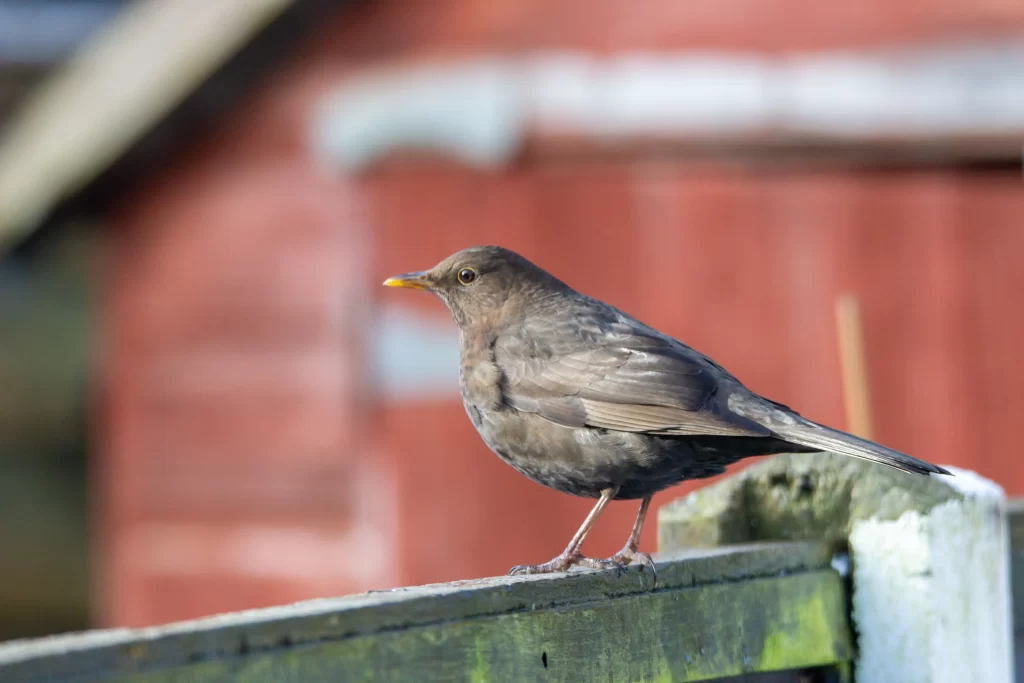
Length: 24 – 27 cm (9.45 – 10.63 inches)
Weight: 85 – 105 grams (3 – 3.7 ounces)
Eurasian Blackbirds are not exactly petite in their stature, but they are certainly common birds in Portugal. Moreover, they are smaller than many of their thrush relatives in this country. Moreover, they are the bird species that those visiting Portugal are most likely to observe, as they’ve been reported on about 300,000 eBird checklists in this country.
Eurasian Blackbirds are sexually monomorphic, with males being black and females being brownish. Males have yellow eyerings and bills, while females sport dark bills. Although Eurasian Blackbirds are migratory in some areas of Europe, populations in Portugal don’t seem to be migratory.
Eurasian Blackbirds breed in a wide array of habitats including gardens, parks, hedgerows, and other semi-open habitats. They are not afraid to live in bustling urban areas where most other birds would fail to thrive.
Eurasian Penduline-Tit
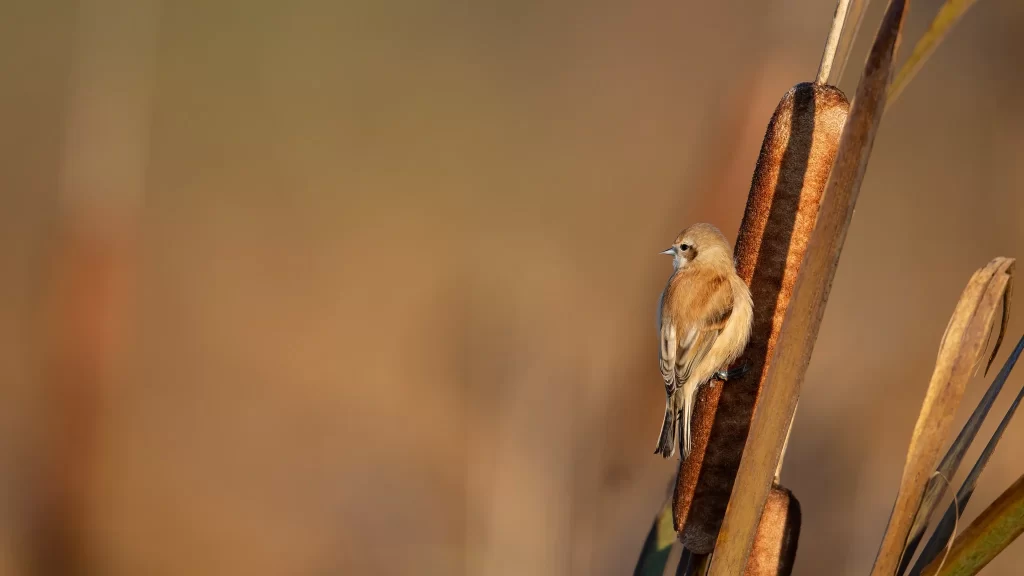
Image attribution: “Buidelmees / Remiz pendulinus / Eurasian penduline tit” by Dirk-Jan van Roest is licensed under CC BY 2.0
Length: 10-11 cm (3.95 – 4.35 inches)
Weight: 8 – 12.5 grams (0.28 – 0.44 ounces)
The Eurasian Penduline-Tit is an uncommon Portuguese bird, as they are generally only present here in winter. However, they are absent from places like the UK, not being among the expected tit birds of Britain. Therefore, Portuguese birders should feel fortunate that Eurasian Penduline-Tits are at least present for some of the year.
Males and females have subtle differences between them, but it is difficult to notice these differences in the field. Much of the length of these Portuguese birds can be attributed to their long tails.
Eurasian Penduline-Tits are small birds in Portugal that are very easy to miss – especially because they forage in tall vegetation adjacent to water bodies where they’re easily obstructed. These small birds of Portugal leave the country by April and typically return around October. They seem to be more common in the southern half of Portugal.
Eurasian Wryneck
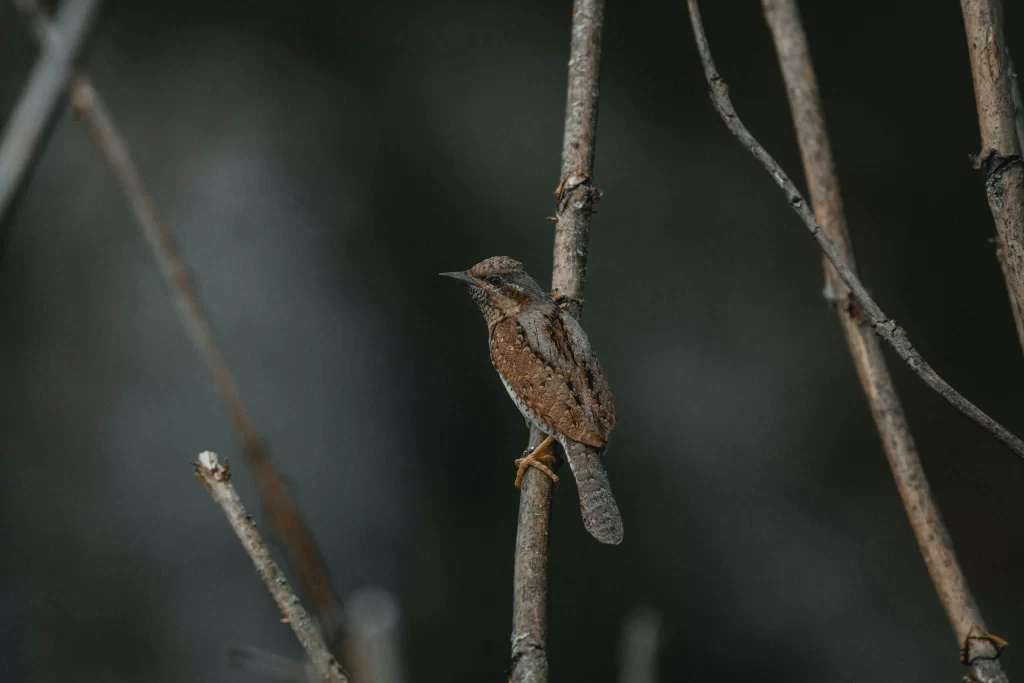
Length: 16 – 18 cm (6.3 – 7.01 inches)
Weight: 30 – 50 grams (1.05 – 1.76 ounces)
Eurasian Wrynecks are an odd woodpecker species that have a massive distribution. Although they aren’t the smallest nor most common Portuguese woodpecker, they are still rather tiny and widely distributed in Portugal.
These woodpeckers of Portugal aren’t often found in woodlands like most other woodpeckers. Instead, they prefer open areas with scattered trees. Here, they dine on their favorite food: ants. They may also eat a wide array of insects, sometimes hopping along the ground to capture them.
Although Eurasian Wrynecks are migratory in many parts of their range, most of those living in Portugal are year-round residents. However, Portugal may host birds during the winter that breed in other parts of Europe.
Iberian Chiffchaff
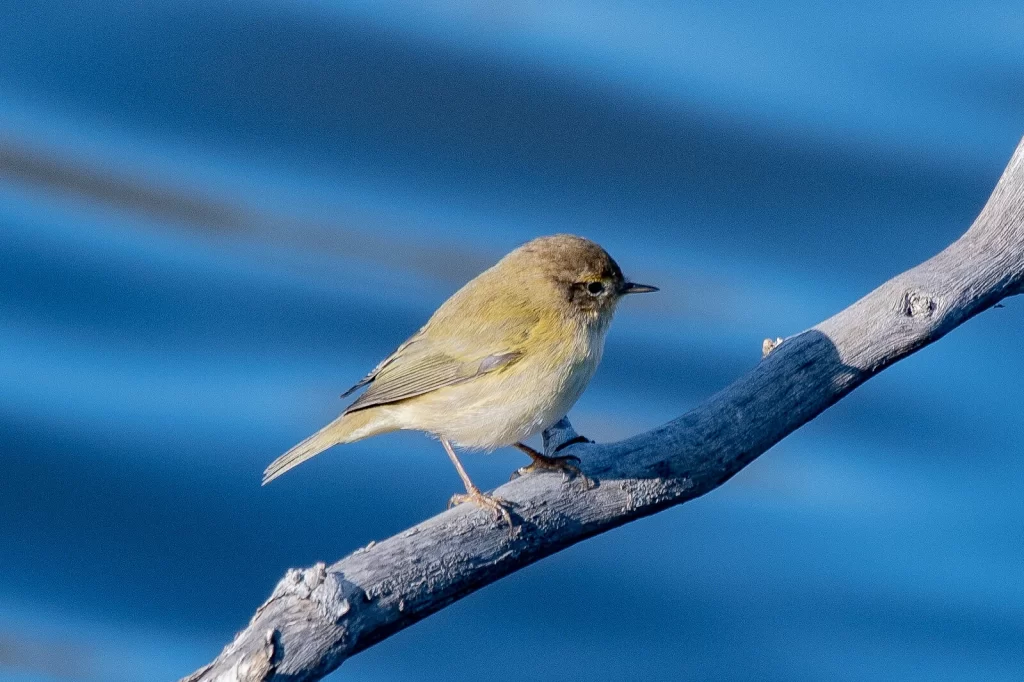
Image attribution: “Iberian Chiffchaff – Malaga” by Etienne Gosse is licensed under CC BY 2.0
Length: 11 – 12 cm (4.35 – 4.75 inches)
Weight: 7 – 8.25 grams (0.25 – 0.29 ounces)
Iberian Chiffchaffs are one of the Portuguese birds that many birders dream of seeing, and they also happen to be one of the smallest birds within Portugal. Although they are very similar to Common Chiffchaffs, the two species can be separated by their vocalizations and songs. Separating them by appearance is not a reliable way to differentiate them.
Iberian Chiffchaffs are rather plain in their appearance, being greenish in plumage color with pale eyebrows. These small birds of Portugal are long-distance migrants, breeding in the Iberian peninsula and wintering in western Africa.
Iberian Chiffchaffs breed in deciduous woodlands and mixed forests during summer. Birds return to Portugal in March, and they begin to leave for the autumn in August.
Little Owl
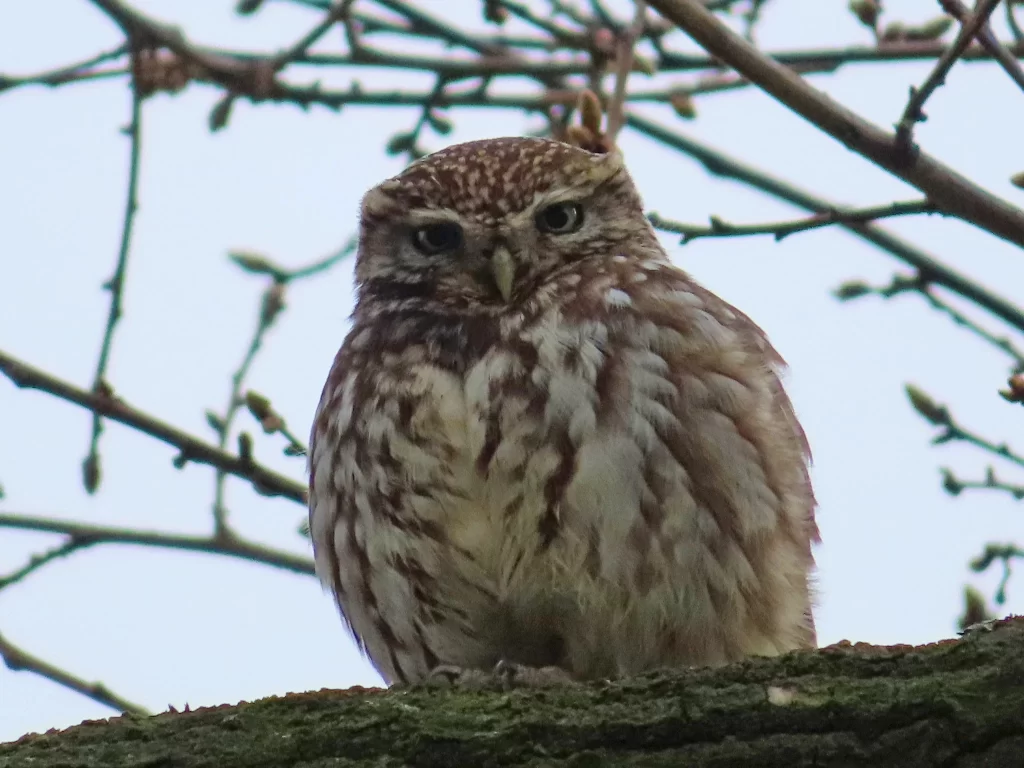
Length: 21 – 23 cm (8.27 – 9.05 inches)
Weight: 162 – 206 grams (5.71 – 7.26 ounces)
Little Owls are aptly named, being the tiniest owl in Portugal. While they’re bigger than most of the other birds on this list, they are still quite petite — especially when considering owls.
These owls of Portugal are sexually monomorphic and widely distributed, being found from Portugal east to the Korean peninsula. They are present year-round throughout their ranges, and they are primarily nocturnal, although some come out during the day–especially around dawn or dusk.
Little Owls survive in a variety of semi-open areas. Agricultural areas, parks, and open woodlands are good places to search for these Portugal owls. Prey items include insects, small mammals, reptiles, and amphibians.
Zitting Cisticola
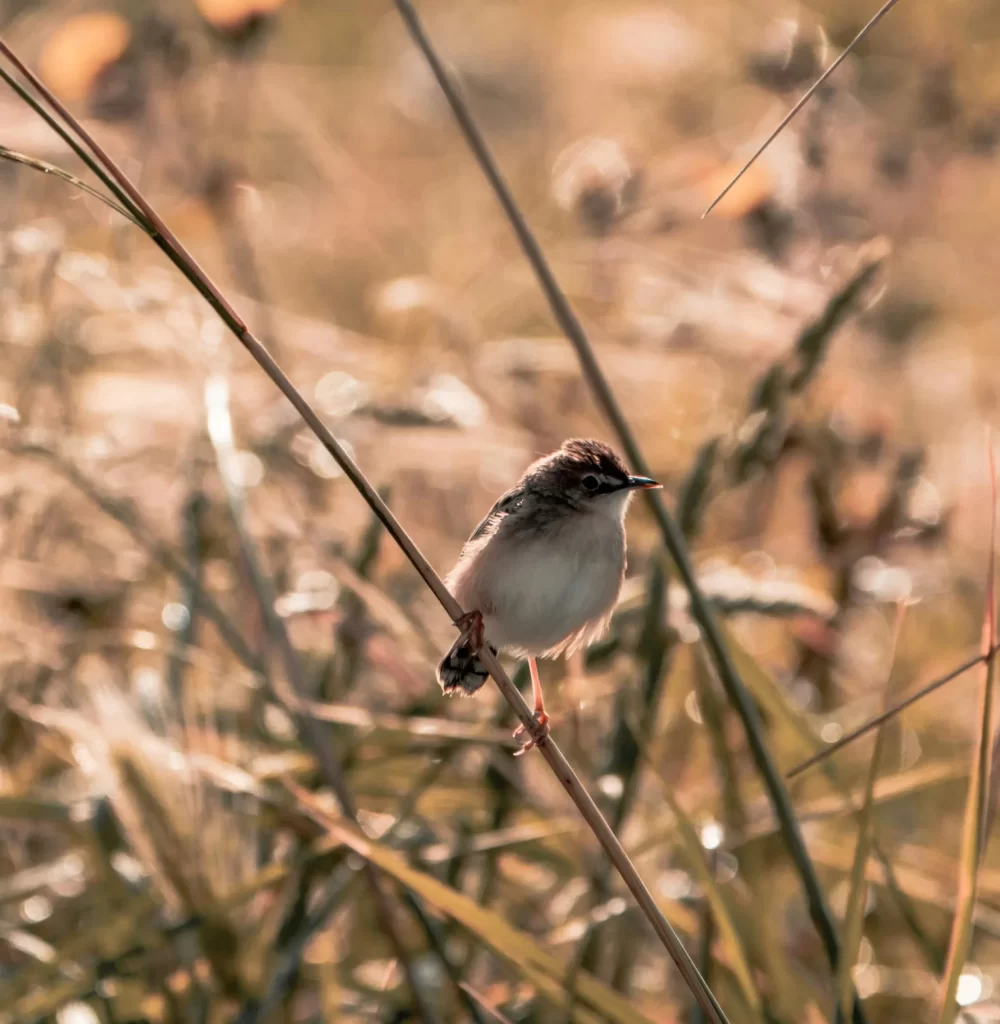
Length: 10 – 14 cm (3.95 – 5.5 inches)
Weight: 5 – 12 grams (0.18 – 0.42 ounces)
Zitting Cisticolas are tiny Portuguese birds with unusual names and an intriguing range. Indeed, their distribution in Europe is patchy, and Portugal is among the best places to observe them on this continent.
These small birds of Portugal are sexually monomorphic, but males are larger than females, sometimes being twice as heavy. They can be found throughout the year in Portugal, and they’ve been observed in all parts of the country.
Zitting Cisticolas are versatile in their habitat use, being found in pastures, grasslands, wetland vegetation, and other open, grassy areas. Here, they sing their namesake songs, “Zit-zit-zit”, and forage for insects.

